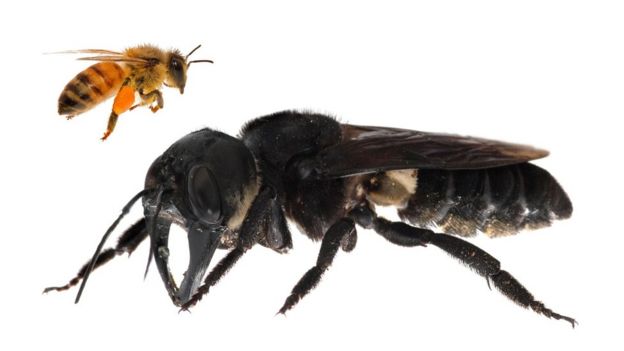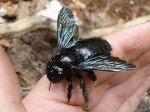M
https://www.bbc.co.uk/news/science-environment-47311186
The world's biggest bee has been re-discovered, after decades thought lost to science.
The giant bee - which is as long as an adult's thumb - was found on a little-explored Indonesian island.
After days of searching, wildlife experts found a single live female, which they photographed and filmed.
Known as Wallace's giant bee, the insect is named after the British naturalist and explorer Alfred Russel Wallace, who described it in 1858.
Scientists found several specimens in 1981, but it has not been seen since.
In January, a team followed in Wallace's footsteps on a journey through Indonesia in an attempt to find and photograph the bee.

The world's biggest bee has been re-discovered, after decades thought lost to science.
The giant bee - which is as long as an adult's thumb - was found on a little-explored Indonesian island.
After days of searching, wildlife experts found a single live female, which they photographed and filmed.
Known as Wallace's giant bee, the insect is named after the British naturalist and explorer Alfred Russel Wallace, who described it in 1858.
Scientists found several specimens in 1981, but it has not been seen since.
In January, a team followed in Wallace's footsteps on a journey through Indonesia in an attempt to find and photograph the bee.

-
2
-
1
- Show all


